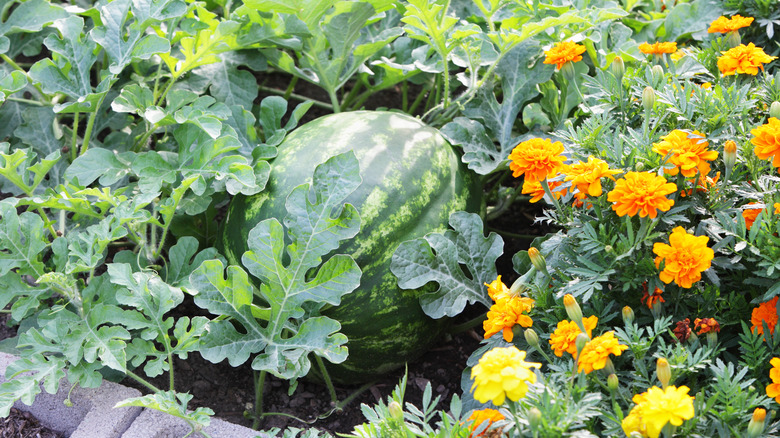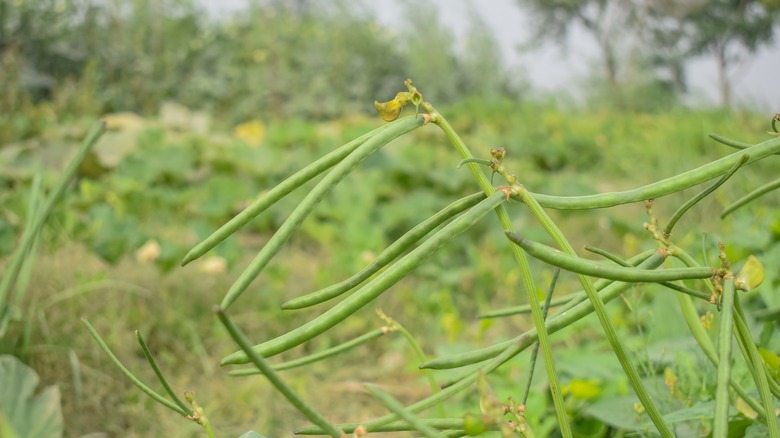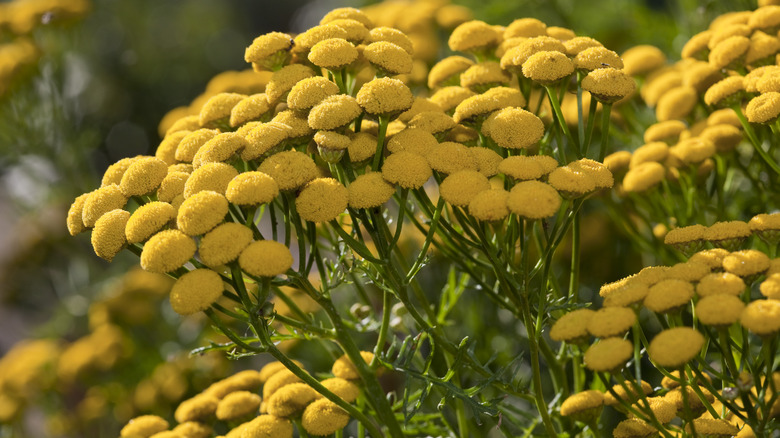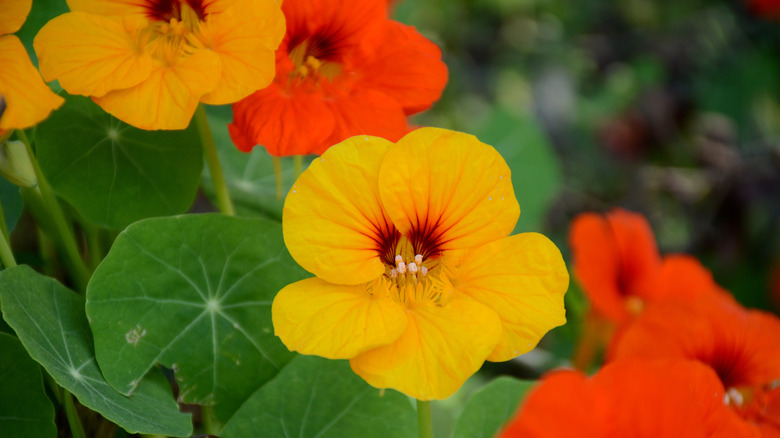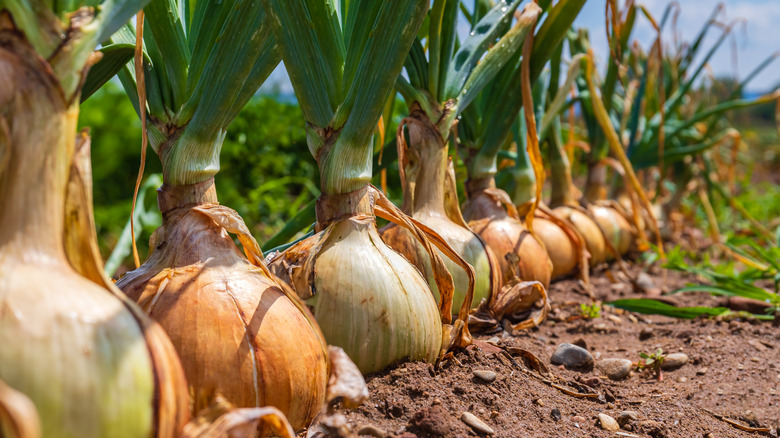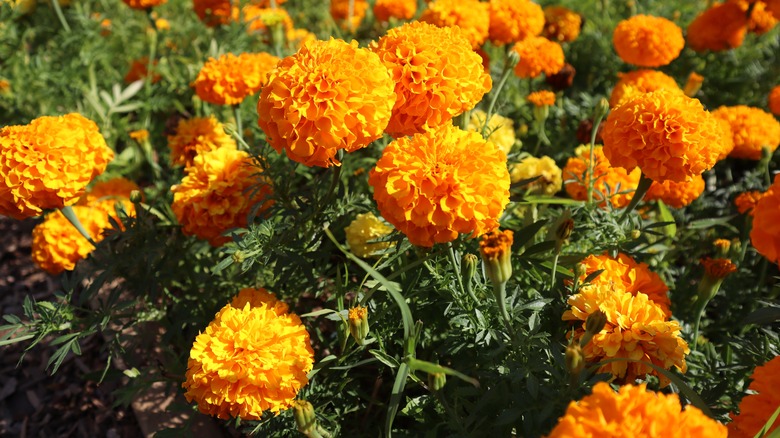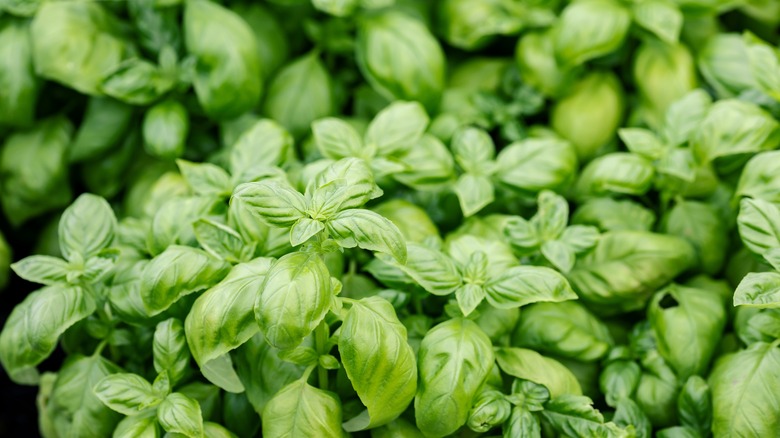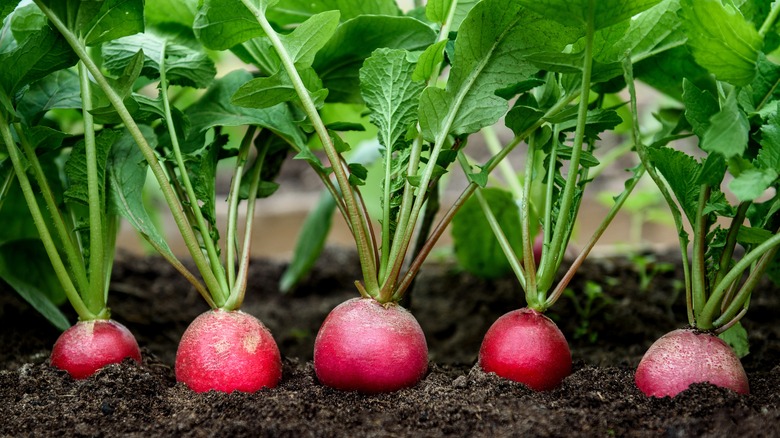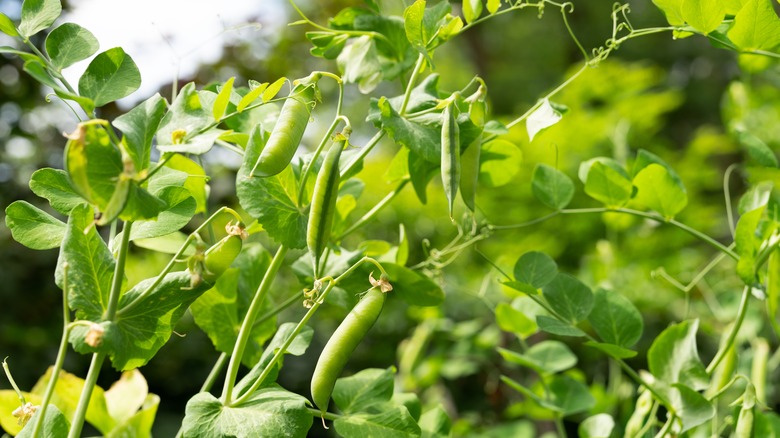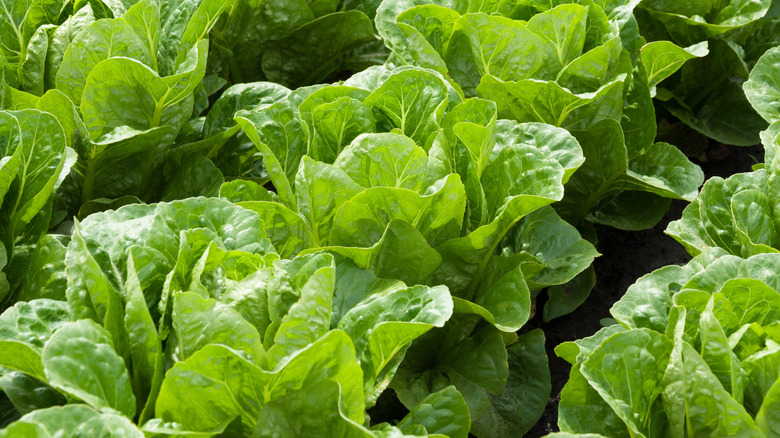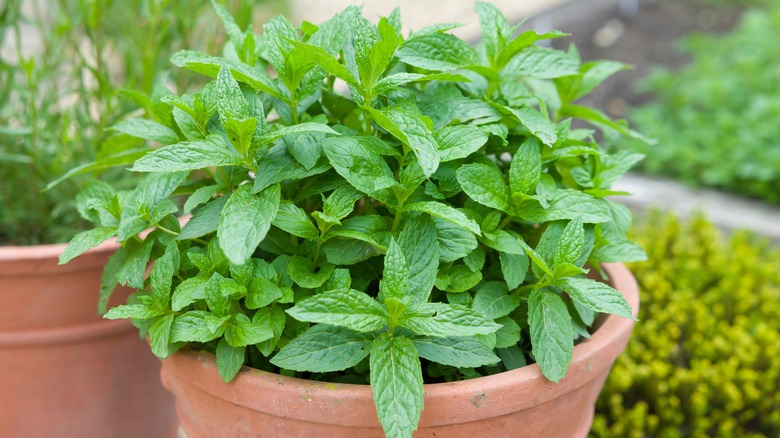Companion Plants That Will Thrive Alongside Watermelons In The Garden
If you've ever tried to grow watermelon without doing any research beforehand, you may have ended up disappointed at the end result. Perhaps insects or rodents came and destroyed the fruit of your plants, ruining your harvest. Or, maybe the fruit didn't grow very large because the flowers weren't pollinated enough. If you've struggled with these issues, there are specific companion plants you could grow next to your watermelon vines that will help them thrive.
Companion plants are crops that you grow near other plants to provide them with certain benefits. For instance, if your issue is pests, you can plant crops that will entice predators of pests or ones that will repel pests with a strong scent. Another type of companion plant will attract pollinators like bees. It's important to keep in mind that since watermelon vines require plenty of sunlight and 12 to 20 feet of room, their companion species need to grow close to the ground and not compete with them for space. Below, you'll find 10 different plants that you can place near your watermelon to help it grow.
Cowpeas
Cowpeas (Vigna unguiculata) will attract bees and other pollinators, which will help your watermelon flowers become fertilized and will produce larger and better fruit. Cowpeas also attract predators of pests, so this will help protect your fruit from dangerous insects. Further, cowpeas are also nitrogen fixers, which means that they absorb nitrogen from the soil and will fertilize your fruit. This companion plant should be in the ground about a month before your watermelon so that both plants bloom around the same time.
Tansy
Yellow tansy flowers (Tanacetum vulgare) have a strong scent, which helps repel pests from watermelon. They also have a compact growth habit, which means that they typically grow low to the ground, so they won't hinder your watermelon's need for full sunlight. Another benefit of tansy is that it attracts ladybugs and lacewings, which are both predators of aphid pests. Planting this companion plant will keep your watermelon from getting eaten by these insects.
Nasturtium
The nasturtium flower (Tropaeolum majus) helps deter two different types of pests that could damage your watermelon and ruin your crop. Their peppery scent can help discourage cucumber beetles while also deterring aphids from feasting on your fruit. They're also not very tall, meaning that they won't produce any shade. These flowers can be placed near but not directly with your watermelon plants.
Onions
Because onions (Allium cepa) have such a pungent scent, they can help deter deer and insects from your garden. It's unknown whether the scent is disliked by pests or whether the scent helps mask the smell of the fruit, but either way, onions are great at keeping potential dangers away. Further, onions won't compete for space with your watermelon since they only grow a small shoot out of the soil, and they won't create shade, either.
Marigold
Marigold flowers (Tagetes erecta) have two main benefits for watermelon vines: they attract bees and other pollinators while also keeping insects away from your fruit. Whiteflies, aphids, and cucumber beetles won't want to feast on your fruit if marigold flowers are nearby. Further, their strong scent also keeps deer away from your garden as well. Try planting this flower along the edge of your garden instead of interspersing it with your watermelon vines.
Basil
While delicious in a watermelon, basil, and feta cheese salad, growing basil (Ocimum basilicum) with your fruit also has another benefit. It repels whiteflies, which can cause major issues for your watermelon. Further, since basil plants aren't very tall or large, they won't shade your fruit vines. They're also not invasive but will stay right where they are planted, which will provide your fruit plenty of room to grow.
Radishes
Radishes (Raphanus sativus) is an ideal plant to place near your watermelons for a number of reasons. Because they grow fast, they'll be harvested before your watermelon vines need extra space to spread out. They also make for a great ground cover, which suppresses the growth of weeds. On top of that, radishes keep pests like cucumber beetles away. And they also attract aphids to their leaves, where predators like ladybugs and lacewings, which can be attracted by tansy, can feast on these insects.
Bush beans
Just like cowpeas, bush green beans(Phaseolus vulgaris) can fertilize your watermelon throughout the season without you having to lift a finger since they're nitrogen fixers. Bush beans are better to grow than pole beans, as they're closer to the ground and therefore produce less shade. However, know that all species of beans and peas are not considered companion plants with alliums, like onions, as these will hinder their growth.
Lettuce
Similar to radishes, lettuce (Lactuca sativa) and other leafy greens like spinach and arugula grow fast and will be removed before your watermelon needs that space, making them ideal for growing with these long vines. They'll also keep your garden free from weeds. They don't grow very tall, so they won't produce any harmful shade, and they're great to pair with watermelon in a summer salad.
Mint
Finally, mint (Mentha), which could be combined with watermelon in a delicious drink, has an overwhelming smell that will repel pests like aphids and flea beetles from your fruit. Further, it will also attract sweat bees and other pollinators, which will help your fruit thrive. However, because mint is invasive, it's best to contain it in a pot or a raised garden bed, which can be placed right next to your watermelon vines.
